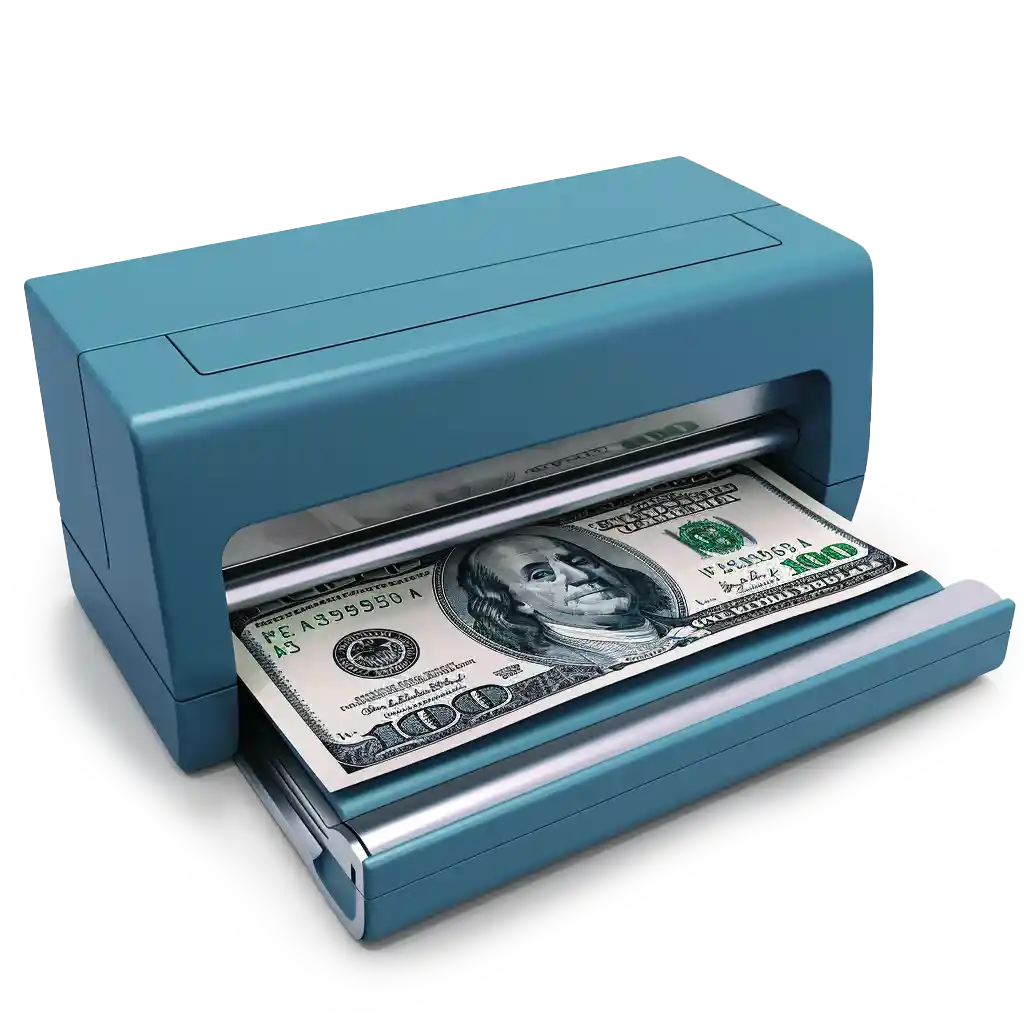Glossary: Electronic Funds Transfer (EFT) Payment

What is an Electronic Funds Transfer (EFT) Payment?
An Electronic Funds Transfer (EFT) is the digital movement of money from one bank account to another. This can involve transactions between accounts within the same financial institution or across different banks. The essence of EFT lies in its electronic nature, which eliminates the need for physical documentation and manual processing. This makes EFT an essential component of the modern financial landscape, catering to the needs of businesses, merchants, and consumers for swift and efficient monetary transactions.
Types of EFT Payments
EFT is a broad term that includes various forms of electronic transactions. Some common types include:
- Direct Deposits: Often used for payroll, government benefits, and tax refunds, direct deposits transfer funds directly into a recipient’s bank account.
- Electronic Checks (e-Checks): Digital versions of traditional paper checks, e-Checks are authorized by the payer and processed electronically.
- Online Bill Payments: Consumers can use online banking platforms to pay utility bills, mortgages, and other recurring expenses electronically.
- ATM Transactions: These allow users to perform banking activities such as withdrawing cash, checking balances, and transferring funds at automated teller machines.
- Phone Payments: Payments made over the phone, where the payee provides their payment details verbally to the recipient.
- Card Transactions: Payments made using credit or debit cards, either at a physical point of sale or online.
Key Features of EFT
- Automation: EFT transactions are processed electronically without manual intervention, reducing the possibility of human error and speeding up the transaction process.
- Security: EFT systems incorporate various security measures, such as encryption and authentication, to protect sensitive financial information during transmission.
- Convenience: EFT provides a convenient alternative to traditional methods by enabling users to complete transactions from anywhere with internet access.
- Cost-Effectiveness: By eliminating the need for paper checks, postage, and manual processing, EFT reduces operational costs for businesses and consumers alike.
Benefits of EFT
- Speed: EFT transactions are typically processed within one to two business days, much faster than traditional methods like mailing checks.
- Reliability: The automated nature of EFT ensures consistent and accurate processing of transactions.
- Environmental Impact: By reducing the need for paper and physical transportation, EFT contributes to environmental sustainability.
- Global Reach: EFT supports international transactions, enabling businesses to operate on a global scale without the complexities of currency conversion and cross-border payment logistics.
Common Uses of EFT
- Payroll: Employers use EFT to directly deposit employees’ salaries into their bank accounts, streamlining the payroll process.
- Consumer Payments: Consumers pay for goods and services electronically, whether online or at physical stores, using EFT methods such as credit/debit cards or digital wallets.
- Vendor Payments: Businesses settle invoices with suppliers and vendors through EFT, ensuring timely and secure payments.
The Electronic Fund Transfer Process
The EFT process, though largely automated and straightforward, involves several crucial steps that ensure the secure and efficient transfer of funds. Understanding these steps helps both businesses and consumers appreciate the reliability and efficiency of electronic payments.
Initiation
- Sender Action: The EFT process begins when the sender initiates a transfer. This can be done through various digital platforms, such as online banking portals, mobile banking apps, or payment terminals at points of sale.
- Details Entry: The sender inputs necessary details, including the recipient’s bank account number, routing number, and the amount to be transferred. Depending on the type of EFT, additional information like invoice numbers or payment references may be required.
- Authentication: To ensure security, the sender might need to authenticate the transaction using methods such as passwords, PINs, biometric verification (like fingerprint or facial recognition), or multi-factor authentication (MFA).
Transmission
- Secure Network: Once initiated, the transaction request is transmitted through a secure network. Banks and financial institutions use encrypted communication channels to protect sensitive information from cyber threats.
- Intermediary Networks: For some types of transfers, such as ACH transactions, the request passes through intermediary networks that facilitate the secure and efficient routing of funds between banks.
Processing
- Bank Verification: Upon receiving the transfer request, both the sender’s and the receiver’s banks verify the transaction details. This includes checking account numbers, ensuring sufficient funds are available in the sender’s account, and confirming the legitimacy of the transaction.
- Compliance Checks: Banks also perform compliance checks to ensure the transaction adheres to legal and regulatory requirements, such as anti-money laundering (AML) laws and sanctions screening.
Completion
- Funds Transfer: Once all checks are complete, the sender’s bank debits the specified amount from the sender’s account and the receiver’s bank credits the amount to the receiver’s account.
- Notification: Both the sender and receiver are typically notified of the transaction status. The sender might receive a confirmation message or email, while the receiver might see the funds reflected in their account balance.
- Settlement Timeframe: Most EFT transactions are completed within one to two business days. However, some transactions, especially international ones or those involving intermediary networks, might take slightly longer.


Key Points of the EFT Process
Security Measures
- Encryption: Data is encrypted during transmission to protect against unauthorized access.
- Authentication: Multi-factor authentication and other security protocols ensure that only authorized users can initiate and approve transactions.
- Monitoring: Banks continuously monitor transactions for suspicious activity and potential fraud, using sophisticated algorithms and machine learning.
Efficiency and Reliability
- Automation: The automated nature of EFT reduces human error and speeds up the transaction process.
- Consistency: The standardized procedures across financial institutions ensure that EFT transactions are reliable and predictable.
- Scalability: EFT systems are designed to handle large volumes of transactions efficiently, making them suitable for businesses of all sizes.
Regulatory Compliance
- AML and KYC: Banks adhere to Anti-Money Laundering (AML) and Know Your Customer (KYC) regulations to prevent financial crimes.
- Data Privacy: Compliance with data protection regulations, such as GDPR or CCPA, ensures that customers’ financial information is handled securely.
Types of EFT Payments
EFT, or Electronic Funds Transfer, includes a wide variety of payment methods, each designed to cater to different transactional needs. Understanding these methods can help businesses and consumers choose the most suitable option for their financial activities.
Electronic Checks (e-Checks)
- Definition: Electronic checks are digital versions of traditional paper checks. The payer authorizes the payment electronically, and the funds are transferred from the payer’s account to the payee’s account.
- Uses: Commonly used for vendor payments, rent, and utility bills.
- Process: The payer provides their bank account information, and the payment is processed through the Automated Clearing House (ACH) network, ensuring security and efficiency.
- Advantages: Reduced risk of check fraud, faster processing times compared to paper checks, and reduced environmental impact.
Direct Deposit
- Definition: Direct deposit is an automatic method of depositing funds into a recipient’s bank account without the need for physical checks.
- Uses: Widely used for payroll, government benefits, tax refunds, and other regular payments.
- Process: Employers or payers submit payment information electronically to their bank, which then transfers the funds directly into the recipient’s account.
- Advantages: Secure and reliable, reduces the risk of lost or stolen checks, and provides immediate access to funds for the recipient.
Phone Payments
- Definition: Phone payments involve the payee providing their payment details over the phone to the recipient, who processes the transaction.
- Uses: Commonly used for utility bills, over-the-phone sales, and customer service transactions.
- Process: The payee verbally provides their credit card, debit card, or bank account information, and the recipient processes the payment using a secure system.
- Advantages: Convenient for users without internet access, allows immediate payment, and can be done from anywhere.
ATM Transactions
- Definition: Automated Teller Machines (ATMs) facilitate electronic transactions such as cash withdrawals, balance inquiries, and fund transfers.
- Uses: Accessing cash, checking account balances, transferring funds between accounts, and depositing checks or cash.
- Process: Users insert their debit or credit card into the ATM, enter their PIN, and select the desired transaction. The ATM communicates with the bank’s system to process the request.
- Advantages: Provides 24/7 access to banking services, convenient for quick cash withdrawals, and offers various banking functions without the need to visit a bank branch.
Card Transactions
- Definition: Card transactions involve using credit or debit cards to make payments at physical points of sale (POS) or online.
- Uses: Purchases in stores, restaurants, online shopping, and bill payments.
- Process: Users swipe, dip, or tap their card at a POS terminal or enter card details online. The payment information is transmitted to the bank for authorization and processing.
- Advantages: Fast and convenient, widely accepted, provides purchase protection and rewards for certain cards, and reduces the need for carrying cash.
Internet Transactions
- Definition: Internet transactions involve making payments online through websites or mobile apps by entering payment details.
- Uses: E-commerce purchases, online bill payments, and digital subscriptions.
- Process: Users enter their payment information (credit/debit card details, bank account information, or digital wallet credentials) on the merchant’s website. The payment is processed through a secure payment gateway.
- Advantages: Convenient for shopping from home, enables quick and easy transactions, supports various payment methods (cards, digital wallets), and often includes additional security features like two-factor authentication.
Other Types of EFT Payments
- Preauthorized Debit Transactions: Regular automatic withdrawals from a bank account, such as for loan payments or subscription services.
- Electronic Benefit Transfer (EBT): Government-issued cards that allow recipients to access benefits like food assistance or cash assistance electronically.
- Wire Transfers: Direct electronic transfers of funds between banks, often used for large or urgent transactions.

EFT vs. ACH: Understanding the Difference
Electronic Funds Transfer (EFT) and Automated Clearing House (ACH) transactions are integral components of modern financial systems, facilitating the digital transfer of funds. While both EFT and ACH are used to move money electronically, understanding their differences and specific use cases is crucial for optimizing financial operations.
What is EFT?
- Broad Definition: EFT encompasses any electronic transfer of money from one bank account to another. This includes a wide range of transactions such as wire transfers, electronic checks, direct deposits, and online bill payments.
- Flexibility: EFTs can be initiated in various ways, including through online banking platforms, payment terminals, and mobile apps.
- Speed: The speed of EFT transactions can vary significantly depending on the method used. For instance, wire transfers can be completed within the same day, while other EFT types may take a few days.
What is ACH?
- Specific Type of EFT: ACH transactions are a specific subset of EFT, involving a network designed to process large volumes of credit and debit transactions in batches. The ACH network is managed by organizations like the National Automated Clearing House Association (NACHA) in the United States.
- Batch Processing: ACH transactions are processed in batches at specific times during the day. This batch processing method helps in efficiently managing large volumes of transactions.
- Security and Reliability: ACH transactions add an extra layer of security compared to some other EFT methods. This is due to the rigorous compliance and operational standards set by governing bodies like NACHA.
- Common Uses: ACH is commonly used for recurring payments such as payroll, direct deposits, mortgage payments, utility bills, and subscription services.
Key Differences Between EFT and ACH
- Scope and Flexibility: While EFT is a broad category that includes various electronic payment methods, ACH specifically refers to the batch processing of transactions through a regulated network. EFT offers more flexibility in terms of transaction types and initiation methods.
- Processing Speed: ACH transactions typically take 1-3 business days to process due to their batch nature. In contrast, other EFT methods like wire transfers can be completed much faster, sometimes within the same day.
- Transaction Volume: ACH is designed to handle high volumes of transactions efficiently, making it ideal for businesses that need to process payroll or manage recurring payments.
- Security Measures: Both EFT and ACH transactions are secure, but ACH transactions benefit from additional regulatory oversight and security protocols. This makes ACH particularly suitable for handling sensitive financial data and large-scale transactions.
- Cost: ACH transactions are generally cost-effective due to their batch processing nature, often involving lower fees compared to some other EFT methods, such as wire transfers.
Practical Implications
- Business Applications: Businesses often use ACH for payroll and recurring vendor payments due to its cost-effectiveness and reliability. EFT methods like wire transfers might be preferred for urgent or large-value transactions.
- Consumer Applications: Consumers benefit from ACH through direct deposit of salaries and automatic bill payments. EFT methods like debit card transactions and online payments offer convenience for daily spending.
Example Scenarios
- Payroll Processing: A company uses ACH to ensure that all employees receive their salaries directly into their bank accounts on a specific day each month. The batch processing ensures consistency and accuracy in handling large volumes of payments.
- Online Shopping: A consumer purchases an item online and pays using their debit card. This transaction is processed as an EFT, specifically a card transaction, providing immediate payment and quick order processing.
- Utility Payments: A household sets up automatic monthly payments for their electricity bill through ACH, ensuring timely payments without manual intervention each month.
Safety of Electronic Funds Transfers
The safety of Electronic Funds Transfers (EFT) is a significant concern for businesses and consumers alike. Given the increasing reliance on digital financial transactions, it is essential to understand the measures that ensure the security of EFT processes. The digital nature of EFT transactions provides several advantages over traditional paper-based methods, reducing the risk of loss, theft, and fraud.
Enhanced Security Features
EFT transactions incorporate multiple layers of security to protect against unauthorized access and fraud. These features include:
- Encryption: Data transmitted during an EFT transaction is encrypted, making it unreadable to unauthorized parties. Advanced encryption standards (AES) and Secure Sockets Layer (SSL) protocols are commonly used to protect sensitive information.
- Authentication: Multi-factor authentication (MFA) requires users to verify their identity through multiple means, such as passwords, PINs, biometric data (fingerprints, facial recognition), or security tokens. This reduces the risk of unauthorized access.
- Tokenization: In tokenization, sensitive data such as credit card numbers are replaced with unique identification symbols (tokens) that retain essential information without compromising security. This ensures that the actual data is not exposed during transactions.
Fraud Prevention Measures
EFT systems employ various measures to detect and prevent fraudulent activities:
- Real-Time Monitoring: Financial institutions use real-time monitoring systems to track transactions and detect suspicious activities. Machine learning algorithms analyze patterns and flag anomalies for further investigation.
- Transaction Limits: Setting daily transaction limits can help mitigate the risk of large unauthorized transfers. Users can customize these limits based on their typical transaction volumes.
- Alerts and Notifications: Customers receive alerts and notifications for transactions, enabling them to detect and report any unauthorized activity promptly.
Regulatory Compliance
EFT transactions must comply with various regulatory standards designed to protect consumers and ensure the security of financial systems:
- Anti-Money Laundering (AML): AML regulations require financial institutions to monitor transactions for suspicious activity and report potential money laundering activities to relevant authorities.
- Know Your Customer (KYC): KYC regulations mandate that financial institutions verify the identity of their customers before conducting transactions. This helps prevent fraud and ensures that institutions are dealing with legitimate entities.
- Payment Card Industry Data Security Standard (PCI DSS): PCI DSS sets requirements for organizations handling cardholder information, ensuring that data is stored, processed, and transmitted securely.
Advantages Over Traditional Methods
EFT transactions offer several security advantages over traditional paper-based methods, such as checks and cash:
- Reduced Risk of Loss and Theft: Physical checks and cash can be lost, stolen, or damaged. EFT transactions eliminate these risks by digitizing the transfer process.
- Tamper-Evident: Digital transactions are harder to alter or forge compared to paper checks, reducing the risk of check fraud.
- Immediate Access: Funds transferred electronically are immediately available to the recipient, reducing the risk of delays and associated security concerns with physical transfers.
Trusted Financial Institutions and Secure Networks
The safety of EFT transactions is further enhanced by using trusted financial institutions and secure networks:
- Reputable Banks: Conducting EFT transactions through reputable banks and financial institutions ensures that robust security measures are in place. These institutions invest heavily in cybersecurity to protect their customers’ data.
- Secure Payment Gateways: Online transactions are processed through secure payment gateways that comply with industry standards for data protection. These gateways ensure that sensitive information is transmitted securely between the customer, merchant, and financial institution.
- Third-Party Security Audits: Financial institutions often undergo third-party security audits to identify vulnerabilities and ensure compliance with security standards. These audits provide an additional layer of assurance for customers.

Benefits of Electronic Fund Transfers
Electronic Funds Transfers (EFT) have revolutionized the way financial transactions are conducted, offering numerous advantages over traditional methods. These benefits include speed, convenience, cost-effectiveness, accuracy, and security, making EFT a preferred choice for both businesses and consumers.
Speed
- Quick Transactions: EFT transactions are typically processed within one to two business days, significantly faster than traditional methods like mailing checks, which can take several days to clear.
- Instant Transfers: Some EFT methods, such as wire transfers and certain online payments, can be completed almost instantly, providing immediate access to funds for the recipient.
- Streamlined Processes: The automated nature of EFT eliminates the need for manual intervention, further speeding up the transaction process and reducing delays.
Convenience
- Digital Access: EFT allows users to initiate and complete transactions from anywhere with internet access, eliminating the need for physical visits to banks or post offices.
- 24/7 Availability: Unlike traditional banking hours, EFT services are available 24/7, allowing users to conduct transactions at any time, including weekends and holidays.
- Paperless Transactions: EFT eliminates the need for physical checks and paperwork, simplifying the payment process and reducing clutter.
Cost-Effectiveness
- Reduced Expenses: EFT reduces costs associated with printing and mailing paper checks, including the expenses for postage, envelopes, and check printing.
- Lower Transaction Fees: EFT transactions often incur lower fees compared to traditional methods, especially for recurring payments like payroll or utility bills.
- Operational Efficiency: By automating payment processes, EFT reduces the need for manual processing and administrative tasks, saving time and labor costs for businesses.
Accuracy
- Minimized Human Error: The automated nature of EFT reduces the risk of human error in data entry, calculations, and transaction processing, ensuring more accurate financial transactions.
- Real-Time Tracking: EFT systems provide real-time tracking and reporting of transactions, allowing users to monitor the status of their payments and quickly identify any discrepancies.
- Consistent Records: Digital records of EFT transactions are automatically generated and stored, making it easier to maintain accurate financial records and conduct audits.
Security
- Enhanced Protection: EFT transactions are protected by advanced security measures such as encryption, authentication, and fraud detection systems, making them safer than physical checks or cash.
- Reduced Risk of Loss and Theft: Unlike physical checks or cash, which can be lost, stolen, or damaged, EFT transactions are conducted digitally, minimizing these risks.
- Regulatory Compliance: EFT transactions comply with stringent regulatory standards designed to protect consumers and ensure the security of financial systems, providing an additional layer of security.
International EFT Payments
Electronic Funds Transfers (EFT) have revolutionized global commerce by enabling businesses to conduct international transactions with the same efficiency and reliability as domestic transfers. This section explores the intricacies of international EFT payments, highlighting their benefits, challenges, and best practices for managing these transactions effectively.
Efficiency and Reliability
- Global Reach: EFT allows businesses to send and receive payments across borders, expanding their market reach and customer base without geographical limitations.
- Consistency: The standardized processes of EFT ensure that international transactions are conducted with the same reliability as domestic ones, providing a seamless experience for businesses and consumers.
- Speed: While international EFT transactions may take slightly longer than domestic ones, they are still faster than traditional methods such as international wire transfers or mailing checks.
Key Considerations for International EFT Payments
Additional Fees
- Transaction Fees: International EFTs often incur higher transaction fees than domestic transfers due to the involvement of multiple financial institutions and intermediary banks.
- Currency Conversion Fees: When transferring funds between different currencies, banks may charge a fee for currency conversion. These fees can vary significantly depending on the institutions involved.
- Intermediary Bank Fees: In some cases, intermediary banks (correspondent banks) may charge additional fees for processing international EFTs, adding to the overall cost of the transaction.
Exchange Rates
- Fluctuations: Exchange rates fluctuate constantly due to changes in the global economy. Businesses must be aware of these fluctuations to manage the financial impact on their transactions.
- Bank Rates: Banks often offer exchange rates that include a margin above the mid-market rate, which can affect the amount received by the recipient. Comparing rates offered by different banks can help businesses find the best deal.
Compliance and Regulatory Requirements
- Know Your Customer (KYC): International transactions are subject to stringent KYC regulations, requiring businesses to verify the identities of their customers to prevent fraud and money laundering.
- Anti-Money Laundering (AML): Compliance with AML regulations is crucial for international EFTs. Businesses must ensure that their transactions do not facilitate illegal activities and that they report any suspicious activities.
- Sanctions and Embargoes: Businesses must be aware of international sanctions and embargoes that may affect their ability to conduct transactions with certain countries or entities.
Best Practices for Managing International EFT Payments
Choosing the Right Financial Institutions
- Reputable Banks: Partner with reputable banks that have a strong international presence and offer competitive fees and exchange rates. These banks are more likely to have the necessary infrastructure and compliance measures to handle international EFTs efficiently.
- Specialized Services: Some financial institutions offer specialized services for international transactions, such as forward contracts and currency hedging, which can help businesses manage exchange rate risks.
Monitoring Exchange Rates
- Real-Time Tracking: Use tools and platforms that provide real-time tracking of exchange rates to make informed decisions about the timing of international payments.
- Rate Alerts: Set up rate alerts to receive notifications when exchange rates reach favorable levels, allowing businesses to take advantage of better rates.
Ensuring Compliance
- Regulatory Updates: Stay informed about changes in international regulations and ensure that your business complies with the latest requirements to avoid penalties and legal issues.
- Transaction Documentation: Maintain thorough documentation of all international transactions, including invoices, contracts, and proof of compliance with KYC and AML regulations.
Utilizing Technology
- Payment Platforms: Use advanced payment platforms that support international EFTs and offer features such as automatic currency conversion, real-time tracking, and comprehensive reporting.
- Integration: Integrate EFT systems with your accounting and financial management software to streamline processes, reduce manual errors, and improve overall efficiency.
Benefits of International EFT Payments
Increased Business Opportunities
- Global Expansion: International EFTs enable businesses to expand their operations globally, tapping into new markets and customer bases without the constraints of geographical boundaries.
- Customer Convenience: Providing international payment options enhances customer satisfaction by offering a convenient and reliable method for making cross-border transactions.
Improved Cash Flow Management
- Timely Payments: EFTs ensure timely payments, helping businesses maintain healthy cash flow and meet their financial obligations promptly.
- Reduced Payment Delays: Unlike traditional methods that can take weeks to process, international EFTs reduce payment delays, improving the overall efficiency of business operations.
Enhanced Security
- Secure Transactions: International EFTs are protected by advanced security measures such as encryption and multi-factor authentication, reducing the risk of fraud and unauthorized access.
- Regulatory Compliance: Adherence to international regulations ensures that businesses conduct secure and legitimate transactions, building trust with customers and partners.

Disclaimer: The content provided on this webpage is for informational purposes only and is not intended to be a substitute for professional advice. While we strive to ensure the accuracy and timeliness of the information presented here, the details may change over time or vary in different jurisdictions. Therefore, we do not guarantee the completeness, reliability, or absolute accuracy of this information. The information on this page should not be used as a basis for making legal, financial, or any other key decisions. We strongly advise consulting with a qualified professional or expert in the relevant field for specific advice, guidance, or services. By using this webpage, you acknowledge that the information is offered “as is” and that we are not liable for any errors, omissions, or inaccuracies in the content, nor for any actions taken based on the information provided. We shall not be held liable for any direct, indirect, incidental, consequential, or punitive damages arising out of your access to, use of, or reliance on any content on this page.
Trusted By
Trusted by 3.2M+ Employees: 21 Years of Service Across Startups to Fortune 500 Enterprises
Join our ever-growing community of satisfied customers today and experience the unparalleled benefits of TimeTrex.










Strength In Numbers
Join The Companies Already Benefiting From TimeTrex
Time To Clock-In
Start your 30-day free trial!
Experience the Ultimate Workforce Solution and Revolutionize Your Business Today
- Eliminate Errors
- Simple & Easy To Use
- Real-time Reporting

Saving businesses time and money through better workforce management since 2003.
Copyright © 2025 TimeTrex. All Rights Reserved.


